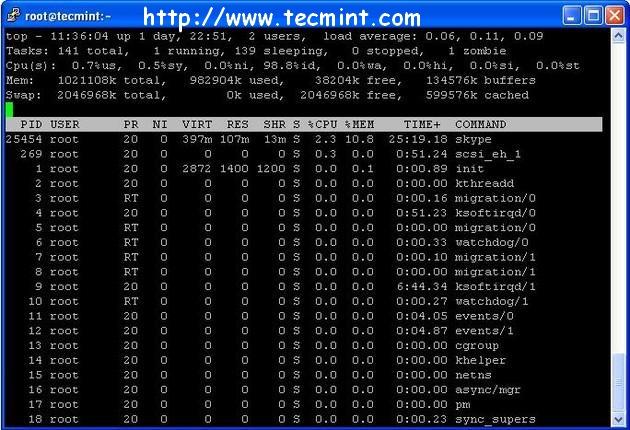

The “ Home” button will move to the top of the list. The “ PgUp”, “ PgDn” keys also work for scrolling the window. You can use the cursor keys ( ←, →, ↑, ↓) to scroll through the list of processes. How to navigate the list of processes in htop Or, while the program is running, press the F5 key: To list processes as a tree, use the -t option: How to display processes in the form of a tree To make the program display new data every 5 seconds:

For example, to make the program refresh the window every 1/10th of a second: To set the update time for htop, use the -d option, after which specify the update time in tenths of seconds. How to speed up or slow down the htop refresh rate The complete command line of the process (that is, the program name and arguments). The time measured in hours indicates how much the process has spent in user and system time. The percentage of memory the process is currently using (depending on the size of the process resident memory, see M_RESIDENT above). The percentage of CPU the process is currently using. T for traced or suspended (e.g by SIGTSTP) Z for zombie (waiting for parent to read its exit status) The size of the shared pages of the process (M_SHARE). So to run it with superuser privileges, use sudo for this: The htop command can be run by a regular user: On Arch Linux, Manjaro, BlackArch and derivatives run: On Debian, Linux Mint, Ubuntu, Kali Linux and their derivatives, run: Install a package named htop using your distribution's package manager. This article will go into detail about htop, to get familiar with top refer to the article “ How to use the top command to monitor Linux processes”. In general, to decide which command is best for you, try both of them. In general, top is much more flexible in customizing the display of processes. In the top command, this is not so convenient – you need to know the button to display the search function.īut in top, you can split the window area and display information about processes in accordance with different settings. For example, the htop program implements a very convenient process search and filtering. The htop command is similar to top in function: they both display real-time information about processes, display system resource consumption, and allow you to search, stop, and manage processes.īoth commands have their own advantages.


 0 kommentar(er)
0 kommentar(er)
